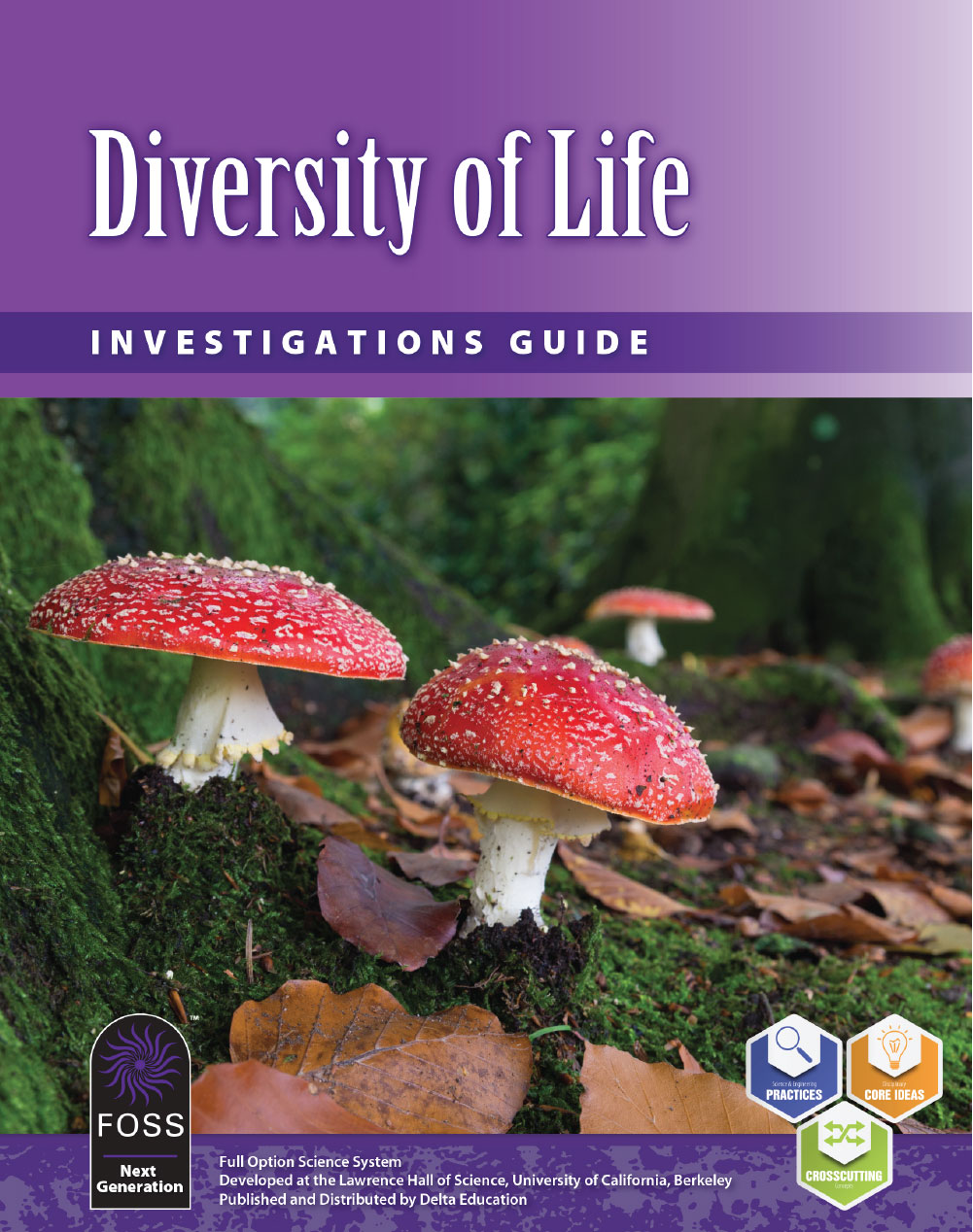FOSS Next Generation Diversity of Life
Grades 6-8

The 12-week Diversity of Life Course introduces students to the big picture of life on Earth. They discover that all living things share the same basic characteristics. All organisms are composed of cells, and a single cell is the fundamental unit of life. Students then explore the relationship of organisms to their environment, and recognize life as a temporary condition experienced for various lengths of time by all living things.
Investigation 1: What Is Life?
Begin investigating life by thinking about the characteristics and requirements that all life has and begin to develop a definition of life.
Investigation 2: The Microscope
Learn to use a compound microscope to open up the world of microorganisms and cells.
Investigation 3: The Cell
Discover cells and think about what it means to be a single-celled or multicellular organism.
Investigation 4: Domains
Learn about the levels of complexity (from atom to cell) and begin to apply a burgeoning understanding of life to unfamiliar organisms.
Investigation 5: Plants: The Vascular System
Conduct an investigation to understand how the vascular system transports water throughout a vascular plant.
Investigation 6: Plant Reproduction and Growth
Dissect a seed and plant various grains to investigate how environmental factors affect germination and growth and explore the role of pollinators in sexual reproduction.
Investigation 7: Variation of Traits
Compare the process of a sexual reproduction of protists to sexual reproduction in flowering plants and most animals.
Investigation 8: Insects
Explore the Madagascar hissing cockroach to understand the world of multicellular organisms.
Investigation 9: Diversity of Life
Conduct a bioblitz to learn about the biodiversity that exists in your area.